 |
The History of Council Housing |
  |
|
|
5 Meeting the Post-war Housing Shortage
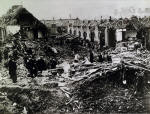 |
The outbreak of the Second World War effectively put a stop to house
building for a second time. As the war drew to a close, Britain faced its worst housing shortage of
the twentieth century. Thousands of houses across the country
had been lost by heavy bombing and many more were badly damaged. It was
estimated that 750,000 new homes were required in England and Wales in
1945 to provide all families with accommodation. Plans were drawn up for
a major building programme, drawing on the themes established prior to
1939. The election of 1945 saw a Labour government voted in and housing
policy was central to their welfare reforms in their manifesto. Aneurin
Bevan, the Minister of Health, was responsible for the housing programme
which focused heavily on local authority involvement rather than
reliance of the private sector. Added pressure on the Government came in
the form of soldiers returning from war and rising working class
expectations as a result of Labour's promises. |
 |
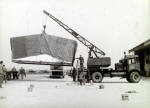 |
Part of the initial response was programme of short term repairs to
existing properties and the rapid construction of
‘prefabs’ – factory built single storey temporary bungalows. These were highly controversial at the time but the Prime Minister
of the time, Winston
Churchill, was strongly in favour and initiated the Temporary Prefabricated
Housing programme. Churchill originally wanted half a million prefabs built
across the country as a stopgap measure until labour could be mobilised for more
permanent housing. They were expected to last for only 10 years but they proved
very popular with
some residents. There are still many lived in across the country with 330 in use
today in the city of Bristol - one of the largest concentrations of prefabs left
in the country. Over the years most prefabs have been demolished and replaced
with permanent housing. |
 |
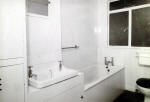 |
The first prefabs were completed June 1945 only weeks after the war had
ended. Factories that had previously been employed to build other products such
as Aeroplanes were converted to build sections of the innovative new houses. It
took a minimum of 40 man-hours to assemble the two bedroom houses complete with
plumbing and heating. Sometimes prisoners of war who were still being held in
the country were used to help in the construction of the concrete slabs on which
the sections of bungalow were erected. The prefabs could be completed very
quickly once the sections were delivered to the site. Unlike traditional houses
they had fully fitted kitchens and bathrooms. |
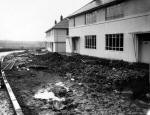 |
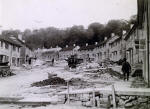 |
Despite the construction of 156,622 prefabs the country still faced an acute
housing shortage and waiting lists soared in urban areas. All over the country
local authorities took the lead in building homes for growing families. House
building battled on despite a shortage of materials and the worst winter in
living memory in 1947. New estates were emerging and established ones expanded,
at the peak of production in Bristol in 1955, 43 families per week were being
moved into brand new homes. Demand was so high that national league tables were
devised showing the numbers of council homes built across the country,
enormous pressure was put on Housing Departments to produce. |
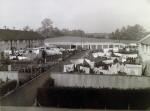 |
 |
To meet the shortage and bring the cost of housing down, a new form of
construction was pioneered, commonly called ‘PRC’ (Pre-cast Reinforced
Concrete). These houses were quick to assemble and required less skilled labour
than traditional build. They were proprietary brands developed and marketed by
different builders. Largely made from concrete panels reinforced with steel
then bolted together or constructed with a steel frame. They included various
kinds such as Airey (left), Cornish, Wates, Unity (below left), Reema, Tarran, Woolaway
(below right) and
Parkinson types. The city of Leeds lead the way with the highest number of PRCs
built. They were like the prefabs in that they were built by non-traditional
methods from components made in a factory but unlike the prefabs they were
permanent and were expected to last for at least 60 years. |
 |
|
 |
The construction of
these new quick build houses seemed like part of the solution to the
housing crisis at the time, however as we will see they were later to
cause major problems for tenants and councils across the country. In the
decade after 1945, 1.5 million homes had been completed and some of the
demand for housing had been alleviated. The percentage of the people
renting from local authorities had risen to over a quarter of the
population, from 10% in 1938 to 26% in 1961. |
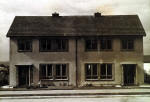
|
|
|